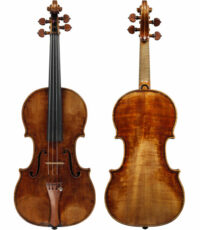
A Violin Goes to the Emergency Room
May 1, 2024
When Helena, my new student at the Curtis Institute of Music, arrived for her first lesson with me, I happened to be facing the other way when she began tuning her violin. But the sound of its open strings was so distinctive, and, for lack of a better word, golden, that I wheeled around and stared at the violin.
“Who on earth made this violin?” I asked Helena.
“It’s a Stradivarius,” she replied. “It’s on loan to me from its owner.” I couldn’t help thinking that each of us, whether student or professional, should be so lucky as to have such a generous benefactor.
As our lesson progressed, it was abundantly clear that Helena was an excellent violinist, but I could not get over the magical sound coming out of the instrument. Mind you, each of us has a unique sound stemming from deep inside our musical feeling that tends to emerge whether we’re playing a fine instrument or something more akin to a cigar box.
There’s a well-known story about a woman who came backstage to congratulate the great violinist Jascha Heifetz after one of his concerts. The violin case with his violin in it remained open as she approached Heifetz, and seeing it she exclaimed, “Oh, Mr. Heifetz, your violin has such a lovely sound.” Heifetz leaned over the violin and listened intently for a moment, and then said to the woman, “Funny, I don’t hear a thing.”
So the sounds coming out of an instrument represent a partnership. I tell my violin what I want from it in a particular musical passage, and it responds not only by indicating what it can and can’t do, but sometimes even revealing a possible sound color I never even imagined.
When the lesson was over, I asked Helena whether this particular Stradivarius had a name, as so many of the master’s great instruments did: The Lady Blunt, The Messiah, The Viotti, for example. Helena said her violin was made in 1732 and was called The Red Diamond.
The Red Diamond.
I knew that name. But from where, and from when? Then it all came back to me in a rush—not just about the violin itself but also the terrible thing that had happened to this great instrument. The national newspapers had covered the story even before I heard it through the musical grapevine.

“Red Diamond” – Antonio Stradivari – Cremona, 1732
On January 16, 1953, Sascha Jacobson, then concertmaster of the Los Angeles Philharmonic Orchestra, was traveling in his car with The Red Violin resting in its case next to him on the front seat. Suddenly, a violent rain storm hit the area and the car was engulfed by a flash flood near the Pacific Ocean. In a matter of seconds Jacobsen realized that he was in danger of drowning in the car, so he grabbed the violin case with one hand, opened the door with his other, and struggled out into the rising waters. As he made his way to safety on higher ground, an unexpected surge of water ripped the case from his hand, and with horror Jacobsen watched the case with his beloved Red Diamond violin inside float out to sea.
The next day, Frederick H. Sturdy, a well known Los Angeles attorney, was walking along the beach when he noticed a violin case half-covered in sand. Inside were the pieces of a violin encrusted in sand, salt water, and ocean slime. By sheer coincidence, Sturdy was friends with Alfred Wallenstein, music director of the Los Angeles Philharmonic Orchestra. When he learned of Jacobsen’s Red Diamond disaster, he contacted Wallenstein, who immediately reached out to Hans Weisshaar, a highly respected luthier in the area.
As a youngster growing up in LA, I was often in Weisshaar’s shop to buy violin strings or to get my bows re-haired. But the most memorable interaction with the luthier took place when I was a member of the Guarneri String Quartet. We were performing, as we often did, in the city’s Wilshire Ebell Theatre, when suddenly Michael Tree’s viola seemed to explode with a loud bang and a tangle of strings. At first, I thought that, as sometimes happens, one of Michael’s viola strings had given out and broken. No problem. All string players carry extra strings for just this eventuality. Michael would simply have to excuse himself and in a matter of minutes reappear on stage with a new string in place and the concert would be ready to continue. This turned out to be no broken string, but something far worse. The thin but tough chord connecting the tailpiece of his instrument to the nut on its end had snapped, sending the tailpiece attached to all four strings flying about.
In all the years I’ve been a string player, I’ve never seen this happen, and for that reason almost none of us carry such a small but essential piece of equipment. Michael stood up holding his viola with its strings drooping forlornly from the instrument, and explained to the audience what had happened. Then he announced that unfortunately the concert would have to be canceled. A groan of disappointment erupted from the listeners, but at the very same time, a man stood up amongst them and motioned for quiet. It was Hans Weisshaar. “Ladies and gentlemen,” he said, “the concert will not be canceled. Simply have the patience to allow me to get to and from my workshop with the required item necessary to reattach Michael’s tailpiece to his viola.” Within less than an hour, the Guarneri Quartet was on stage continuing its performance. Hans Weisshaar, an unexpected hero, had rescued the concert.
But what about the Red Diamond violin, that apparently had acquired its name from the striking ruby red color of its varnish, and for the moment would be hard to distinguish from the rest of a fisherman’s daily catch? And what would even the distinguished luthier Weisshaar—who had emigrated to the United States from Germany in 1937 and moved in 1947 to Los Angeles, where he rapidly built up a clientele of world-class musicians—be able to do with this salt-waterlogged collection of violin parts?
By some miracle, nine months later Weisshaar delivered the Red Diamond, looking as if nothing had ever happened to it, to Sascha Jacobsen—incidentally, the Sascha of George Gershwin’s song Mischa, Jascha, Toscha, and Sascha, and formerly first violin of the magnificent Musical Art Quartet. Jacobsen claimed to his friends that the violin sounded better than ever.
Of the estimated 960 violins that Antonio Stradivari made, only 450 to 516 are said still to exist. Without the wizardry of Hans Weisshaar, possibly one fewer example of the great instrument maker’s work would still be with us. And so, I raise a glass to Weisshaar, but also to the other participants in this story—my former student Helena, her most generous benefactor, Sascha Jacobsen, and the man walking on the beach who spied a violin case half-covered in sand. They enabled the now-almost-300-year-old Red Diamond violin, with its distinctive, golden sound, to continue on its improbable journey.
Subscribe
Sign up to receive new stories straight to your inbox!









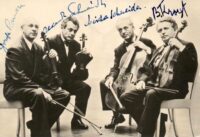





















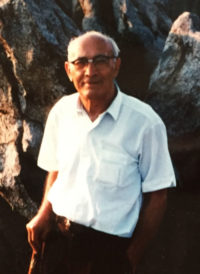


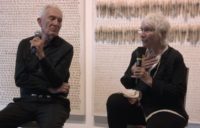


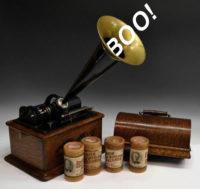
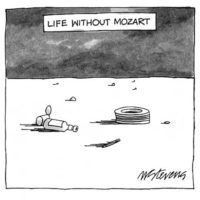















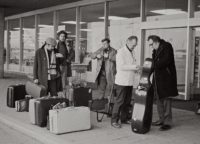



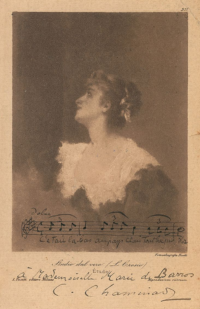




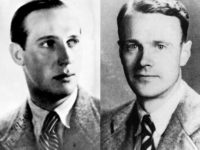


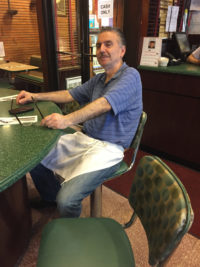



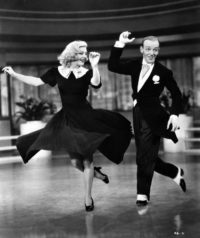







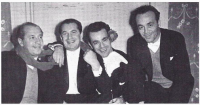
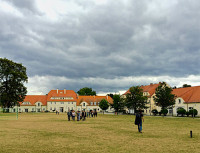
























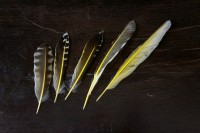

























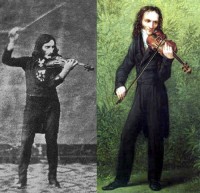



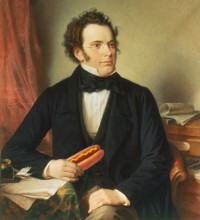

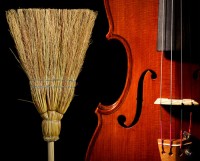





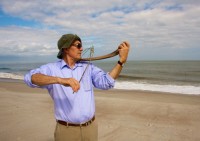























Comments
And where is Helena playing now?
Good Story! Especially about Heifetz, who never stopped practising ever!!!!
I remember playing on this violin in 1997, when it was for sale at Dietmar Machold’s impressively handsome showroom across from Juilliard (in that long-since demolished loft building).
It was the first “great” Strad I had the honor to play, and I recall the glamor and beauty of it that fairly exclaimed – “you shall never have me.”
I also remember the price at that time: $3.5 million. My, how times have changed.
What a wonderful story!
oh my god what a wonderful story. I had a similar experience, a student started tuning. same reaction, it was the last Stradivari owned by Kreisler in her hands on loan. I brought her and the violin to Rene for adjustment. The eyes of Rene how big they got. I would never forget
hmm I left a story and comment, but it just disappeared…?
Thank you, Arnold. Enjoyed reading this and had never heard the story before.
What a nice story and so very nicely told. Thanks for your many wonderful recollections that so many people enjoy. I enjoyed your master class at the Lynn Conservatory of Music in Boca Raton,FL many years ago.
In the spring of ’55 while on tour with the Virginia Sym and sitting ass’t concertmaster, the original gut holding the tailpiece on my Poggi snapped in the middle of a Brahms Symphony. Tailpiece, strings, and mute went flying. For this, I was fired. Only then did I discover the Sacconi nylon tailpiece holder that was just coming out.
wow. that’s all.
Eine unglaubliche Geschichte. Eine Bratschen-Geschichte aus unserer Familie: Mein Vater fand nach dem Krieg auf dem Schrank bei seinem Vater eine kaüutte und verstaubte Testore-Bratsche, die er für wenig Geld aus Not, um die Familie zu ernähren, Verkaufen musste.
Beautiful story, Arnold, like always!
Keep them coming!
What a story ! You are a fabulous storyteller !! And =a happy ending !
Hi Arnold!
Great story! You filled in a lot of details for us!
all the best!
And a raised glass to you for sharing a great story.
Wow! What a story!
reminds me of a 1971 stint at the jeunesse musicale du canada summercamp with my velasguez classical guitar.
i was in an open air practice shed. there were mosquitos. i put on repellent. to my
horror that night the repellent on my legs had eaten into the velasgues’ finish and ruined it.
two years later a luthier repaired it for me. but the sound had lost its old mellowness.
I remember very well when this happened — I was studying at UCLA (before attending Juilliard in NY) and hearing about this terrible loss of a priceless Stradivarius. Sascha Jacobsen also taught at the Music Academy of the West, which I attended for 4 summers. What a story, fortunately thanks to Hans Weisshaar with a happy ending! And Arnold, thank you so much for the beautiful photos of the Red Diamond! And your story of recognizing its magic tone. ???
Love your writing, as always. Brought back memories of that 1953 incident, when I was a student at USC. And yes, I do remember Hans Weisshaar’s magic, and being amazed that the Red Diamond did indeed sound better after his work. Also made me think of the dreaded “boards” at USC that year. I didn’t study with Mr Jacobson, but he chaired the committee for which every violin student was required to perform each year. The exam always started with a 4-octave scale, and Mr. J asked me for some key with a ridiculous number of sharps or flats, can’t remember which. I took a deep breath and played the scale, breathing an inward sigh of relief as I finished, relieved I hadn’t missed a note. There was a brief silence, then Mr. J intoned “I don’t get your rhythm.” Rhythm—the last thing I was thinking of! Certainly took me down a notch, no doubt a good thing!
When attending the Music Academy of the West to spend a summer to study with Sasha Jacobson, I & a fellow student (Bob Brown) had shown up for our respective violin lessons in Mr Jacobsen’s studio, which was located across a courtyard from the main Academy bldg. The professor said he was going to get a drink of water (in the main bldg) & would be back momentarily. He had left his Strad in the open case on a table.
With Jacobsen gone, the temptation was simply too great to resist! Brown grabbed the Red Diamond & began playing the Bruch! After what seemed like an hour, he handed me the Strad….”try it”! I couldn’t resist, & began playing Bach’s Chaconne, which I was studying with Jacobsen. While Brown was on the lookout for Jacobsen’s return, I sawed
away on the Chaconne . All of a sudden, Brown screams “here comes Jacobsen”! I, quickly replaced the Strad in the case as Jacobsen came bursting through the door & almost leaping to his case, bent over his violin, & spinning around, glaring at me & venomously said…”DON’T YOU EVER TOUCH THIS VIOLIN”!! He could tell from across the courtyard that it was his Strad, AND that I was the culprit because of the Chaconne! I sheepishly left full well knowing that I would be expelled, & never heard a word about the incident! Lucky!
away. All of a sudden, Brown screams…”here comes Jacobson”! Jacobsen was literally running across the courtyard to his studio, bursting through the door & lunging to his violin case, where I had just replaced the Red Diamond! Turning to me, he said “don’t you ever touch that violin”!! He, hearing the Chaconne, from across the courtyard, could tell it was his Strad, & knew I was the culprit because of the Chaconne! Shaking in my boots, I didn’t say a word! Certain I would be expelled, I threatened Brown to tell all to save my skin! Jacobson let the whole incident go,
Buell Neidlinger, the legendary bassist you know and have performed with, told me he saw Ralph Gomberg, oboist of the Boston Symphony when Buell was there, toss a new Loree oboe into a fresh snow bank after a storm. “I want it cracked now and pinned, not during the concert. Anyway it’ll sound better after that.” Hell of a way to break in a woodwind instrument?
Arnold, yet another great story. I didn’t know a lot of those details about the Red Diamond but so many memories came back about Hans Weisshaar. Poor Michael in those frightful first moments but such an amazing end. I loved the remark by Heifetz which I also had never heard before.
Dearest Arnold, once again, you have provided me with something to gasp and to smile about bringing back so many memories, including Hans repairing the bow that I had smacked across the back of the chair at the age of six because I was so tired of hearing my mother say “Judy can’t come out and play right now because she’s practicing her violin“ as well as the joy I felt when he delivered with two hands, the bow after he had prepared itfor me, saving my life and the life of my beautiful music. I didn’t appreciate it as much then as I would today. But listening to others playing still delights me and reading what you write delights me further. Warm regards, Judith.
Leave a Comment
*/